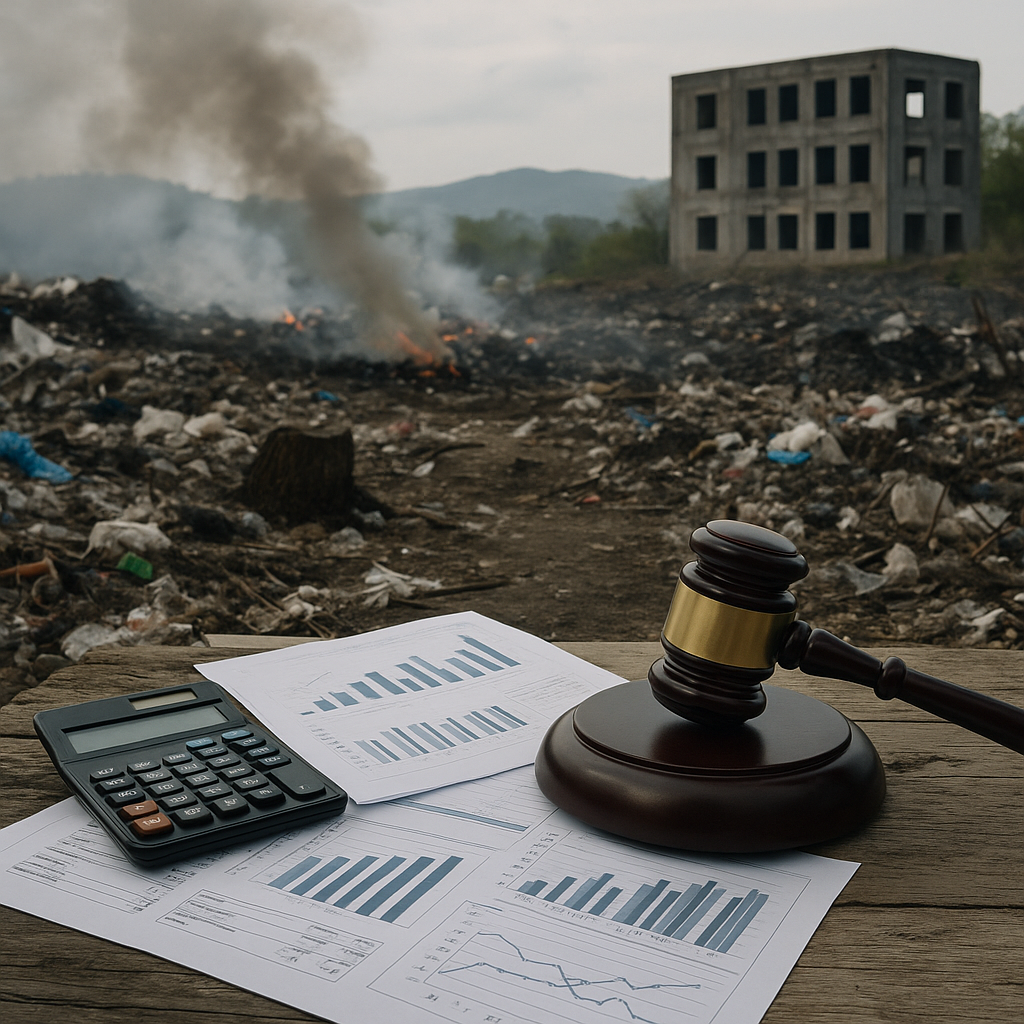Digital technology and governance must unite to tackle global environmental threats
Climate-induced extreme weather events damage infrastructure, disrupt supply chains, and increase operational costs. Biodiversity loss undermines agriculture, fisheries, and natural resources vital to many economies, while pollution and resource depletion exacerbate social inequalities and public health crises. These impacts, the authors argue, create a feedback loop where economic instability hampers the capacity to invest in environmental protections, further worsening the situation.

A new study warns that current governance and legal frameworks are ill-equipped to address the cascading risks posed by global environmental change. Published in Sustainability, the research calls for urgent integration of digital technology and adaptive regulations to protect economies while promoting sustainable development.
The study "The Risk of Global Environmental Change to Economic Sustainability and Law: Help from Digital Technology and Governance Regulation", the paper examines how environmental crises are disrupting industries, destabilizing economies, and challenging legal systems worldwide. It proposes a new model, Digital–Green Governance (DGG), as a pathway to strengthen resilience through the synergy of technology and policy.
How do environmental changes threaten economic sustainability?
The research outlines how global environmental change disrupts economic systems at multiple levels. Climate-induced extreme weather events damage infrastructure, disrupt supply chains, and increase operational costs. Biodiversity loss undermines agriculture, fisheries, and natural resources vital to many economies, while pollution and resource depletion exacerbate social inequalities and public health crises. These impacts, the authors argue, create a feedback loop where economic instability hampers the capacity to invest in environmental protections, further worsening the situation.
Beyond economic losses, environmental crises also challenge the stability of legal and governance structures. The authors note that existing regulations often fail to keep pace with the evolving scale and complexity of environmental threats. Inconsistent enforcement, fragmented policies, and the lack of global coordination hinder effective responses. Developing nations are particularly vulnerable, facing both the highest environmental risks and the weakest institutional capacities to manage them.
The study argues that traditional approaches to environmental governance are no longer sufficient. Without innovative tools and adaptive legal frameworks, countries risk falling behind in meeting sustainability targets, such as those outlined in the United Nations Sustainable Development Goals (SDGs).
What role can digital technology play in combating environmental risks?
To address these challenges, the authors introduce the concept of Digital–Green Governance (DGG), a framework that integrates advanced technologies with governance reforms to improve environmental and economic outcomes. Digital technologies, including artificial intelligence, blockchain, big data, and the Internet of Things (IoT), offer powerful capabilities for monitoring, prediction, and enforcement.
For example, AI-driven analytics can identify environmental risks in real time, enabling faster responses to extreme weather events or industrial pollution. Blockchain technology can enhance transparency and traceability in supply chains, reducing illegal exploitation of resources. IoT networks can monitor emissions, water usage, and biodiversity indicators with unprecedented precision, feeding data into governance systems that adapt dynamically to changing conditions.
The study highlights successful case studies illustrating these applications. The European Union’s AI Act is cited as an example of how regulatory frameworks can foster the adoption of climate-friendly technologies. In Kenya, blockchain-enabled land registries have reduced displacement and improved land-use planning, while Singapore’s Smart Nation program demonstrates how IoT can enhance climate resilience at the city level.
However, the authors caution that technological solutions must be coupled with strong governance to avoid creating new vulnerabilities. Without appropriate regulations, digital tools risk exacerbating inequalities, violating privacy, or being misused in ways that undermine sustainability goals.
How can governance regulation enhance environmental and economic resilience?
While technology is a critical enabler, the study stresses that it cannot substitute for robust governance. Effective regulation is essential to channel technological innovation toward sustainable outcomes. The authors argue that adaptive legal systems, capable of evolving alongside technological advancements, are necessary to close the gap between environmental risks and regulatory responses.
Key recommendations include strengthening global cooperation to align international policies with SDGs and address transboundary environmental challenges. The study also calls for adopting adaptive legal frameworks that can regulate emerging technologies without stifling innovation. This balance is crucial to harness digital tools effectively while safeguarding human rights and environmental justice.
Equitable access to technology is another priority. The authors warn that digital divides, especially between the Global North and South, risk widening gaps in resilience. Ensuring digital inclusion, through investment in infrastructure, skills development, and equitable access, will be critical to achieving sustainability at a global scale.
The paper further advocates for leveraging green finance to incentivize compliance and performance. Linking funding to measurable environmental outcomes can drive businesses and governments to adopt sustainable practices. At the same time, legal frameworks must ensure that financial mechanisms do not disproportionately burden vulnerable communities.
The authors urge policymakers to act swiftly, warning that the window to avert catastrophic consequences is rapidly closing.
- FIRST PUBLISHED IN:
- Devdiscourse










